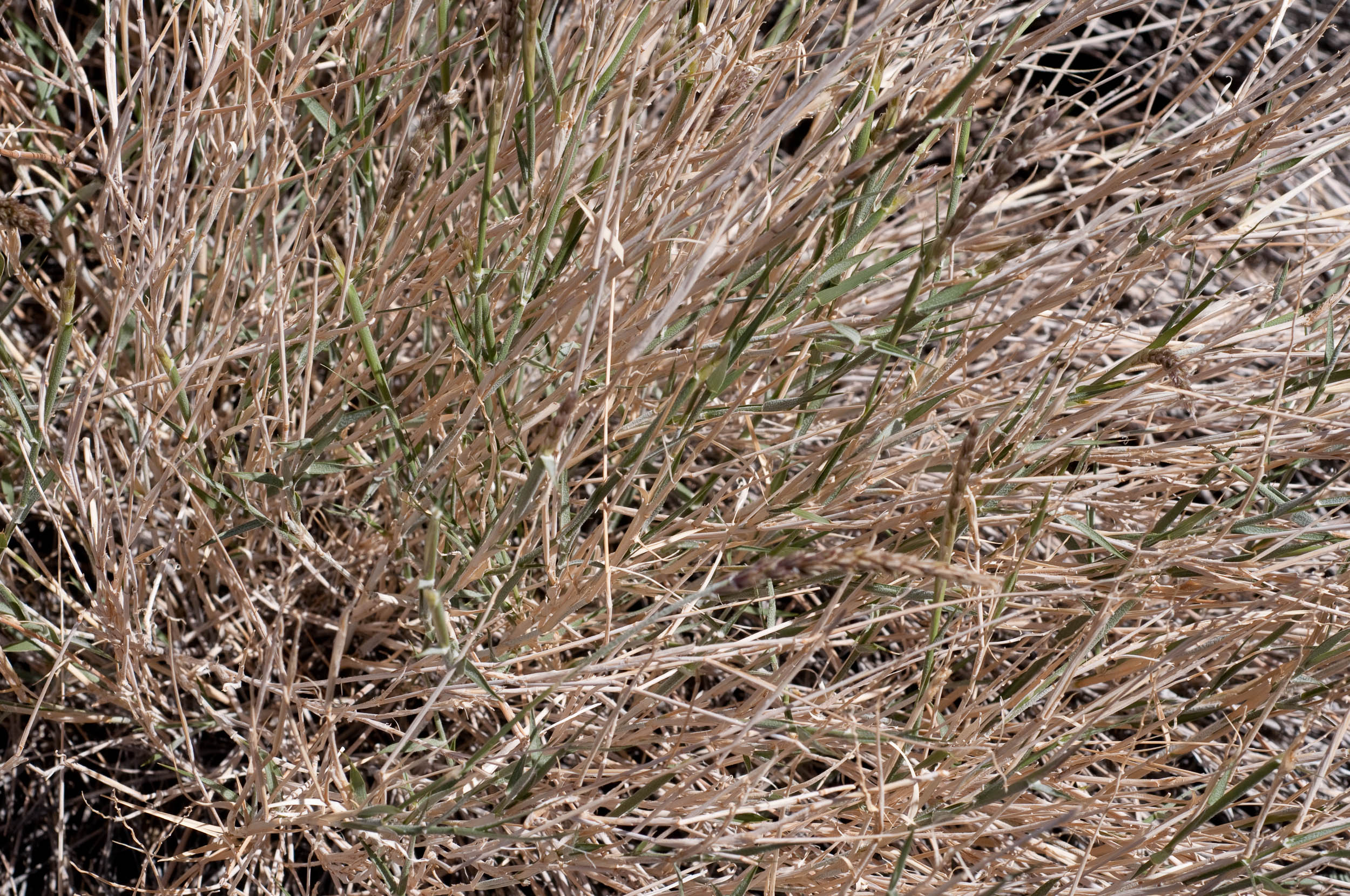Big galleta
(Hilaria rigida)

Description
Hilaria rigida is a species of clumping perennial grass that is widespread in California deserts. It is commonly known as big galleta. It is a monocot in the Hilaria genus of the grass family (Poaceae). It can be recognized after seed dispersal by the wiry, wavy inflorescence stalks (flexuose) that continue to stick out of the clump of leaf blades. The stems are unusual among grasses in that they are solid, even between the nodes, whereas most grasses have hollow stems. H. rigida is a long-lived, shrubby or bushy, clumping perennial grass producing coarse, erect stems reaching 1 m (3.3 ft) in maximum height. It spreads from hard, woody rhizomes to form grayish, hairy, open, erect hummocks and clumps.The clumps can live to more than 100 years old. Its primary means of reproduction is by rhizomes, possibly also by tillering. It has a bush-like appearance because it is highly branched at the base. Clumping results from spread by tillers or short rhizomes. Clumps of leaves are 3 to 4 ft (0.91 to 1.22 m) wide. Seeds fall when mature, but their stalks persist, sticking out from the clumps like zigzagging wires, by which the plant can be identified at a distance. It is drought tolerant and very fast growing after rains. It typically undergoes two major growth periods, one after winter rains, the other after summer monsoons. It is reported to be more effective than many other desert plants at extracting water from the soil during dry periods. Roots are shallow and radiate outward from the base of the plant. Fuzzy to wooly stems are stiff, heavy, and coarse, from 12 to 40 in (300 to 1,020 mm) long. The stems are unusual among grasses in that they are solid, even between the nodes, whereas most grasses have hollow stems. They can be either erect or laying on the ground (decumbent). Stems have nodes that are lined with long, sometimes curly hairs. Leaf blades are coarse and firm, fairly wide, and almost straight, from grayish to blue-green, sometimes with light wooly fuzz, and have curly hairs and edges that are rolled upward. They are from 1.0 to 2.5 in (2.5 to 6.4 cm) long. Leaves are attached either to the base of the plant or along the upright stems that bear the heads of seeds. The inflorescence is a series of hairy or brush-like rectangular[citation needed spikelets, occur in clusters of three, between 2 and 3 in (5.1 and 7.6 cm). The grass produces relatively few viable seeds and spreads mostly by its tillers and sometimes via rhizomes. The inflorescence stalk persists after the seeds drop, sticking out of the clump of leaf blades like stiff, wavy wires. It blooms between December and January according to some sources, from May to June in the Mojave Desert according to others, and from February through June in the Mohave Desert according to others. The variation may result from a paucity of information on germination characteristics (as of 2014). Seedlings rarely become established. The head of seeds is a spike of seeds with much chaff. Spikes are 1.5 to 4.0 in (3.8 to 10.2 cm) long.
Taxonomic tree:







